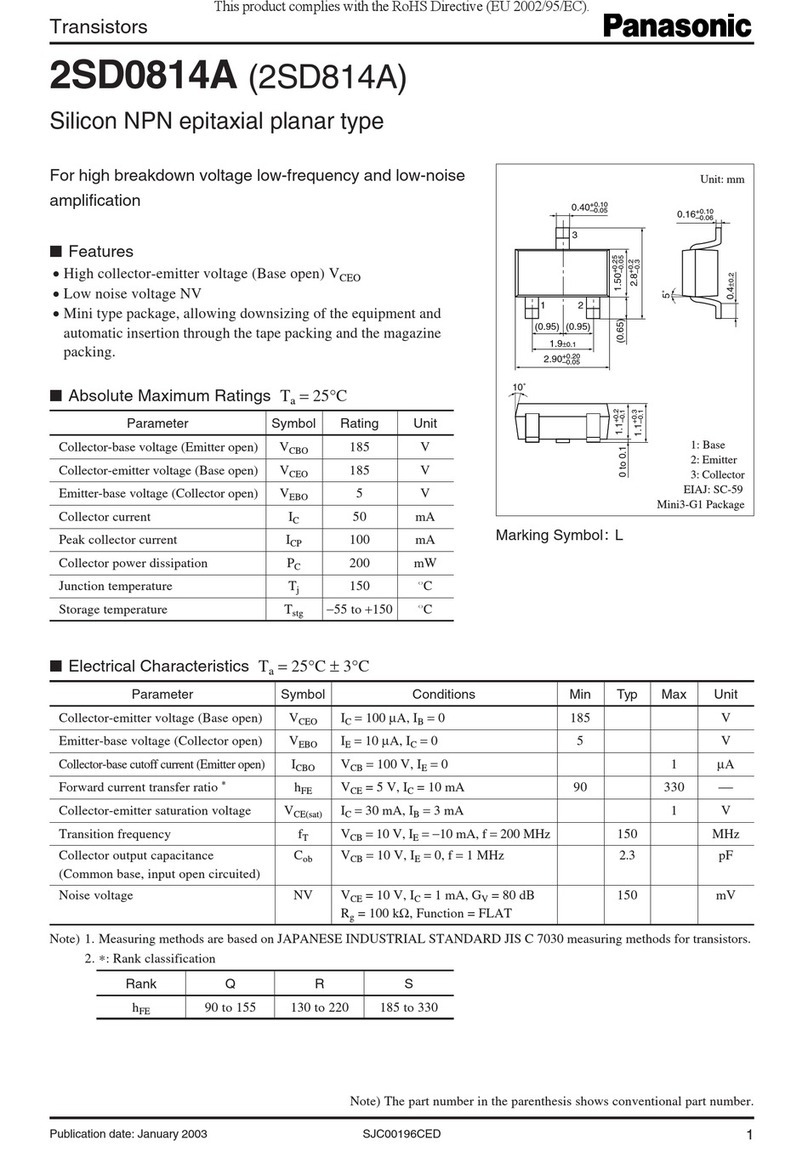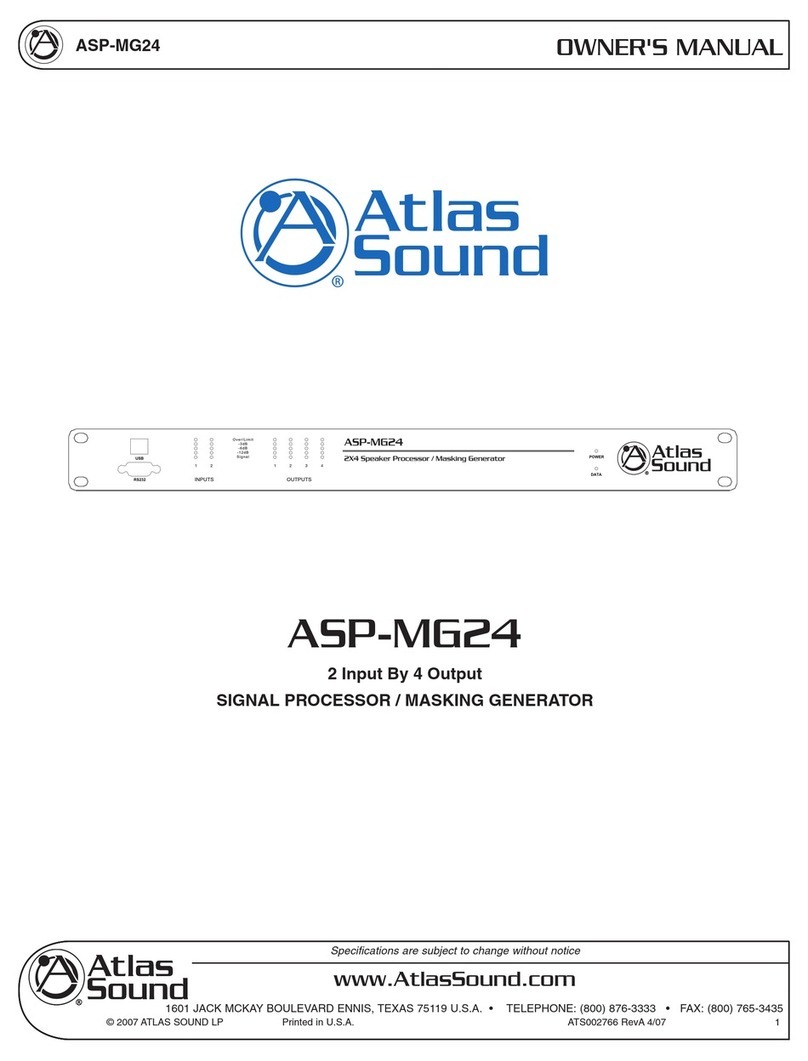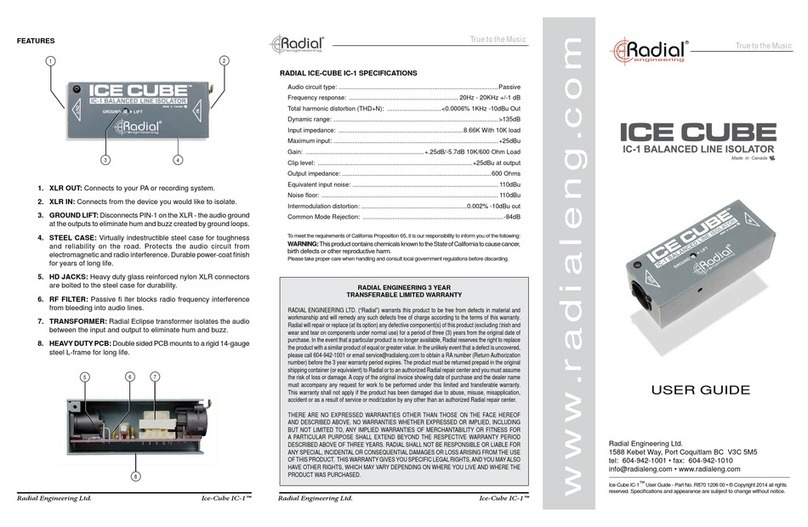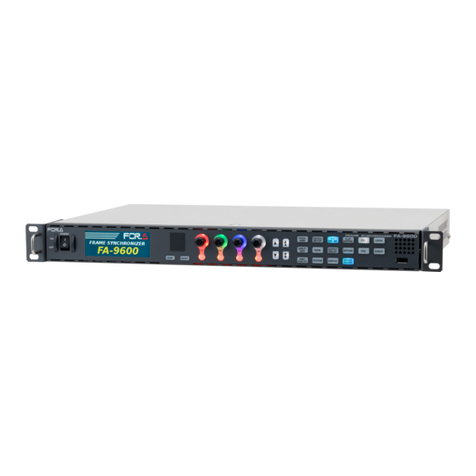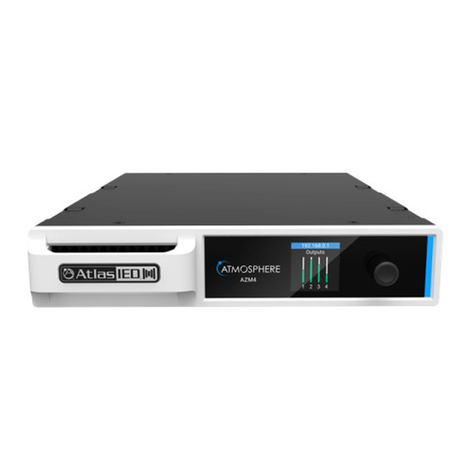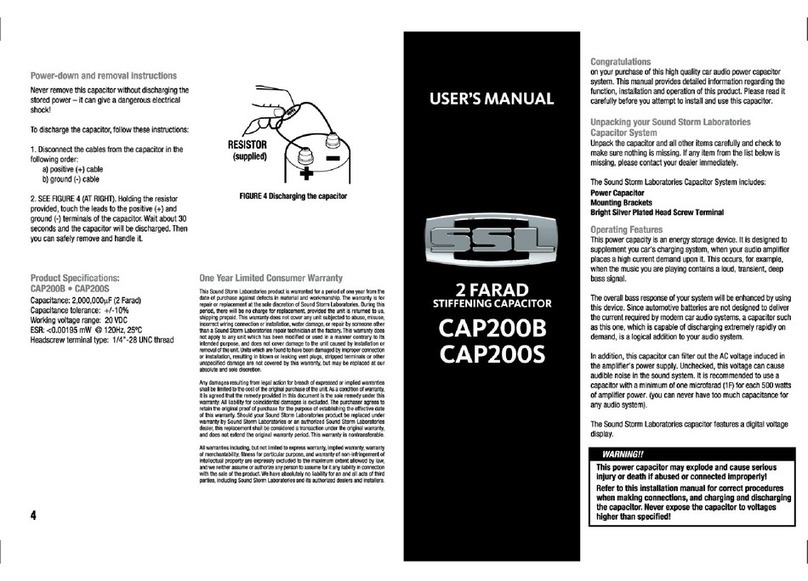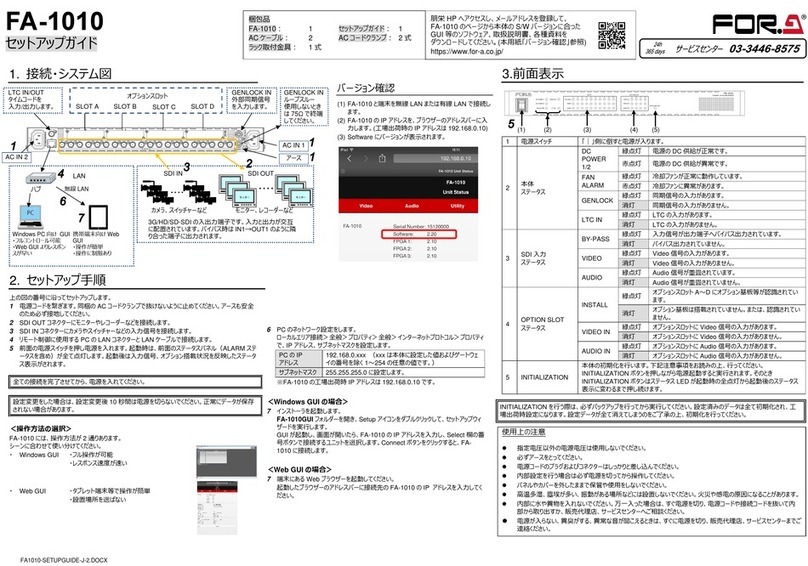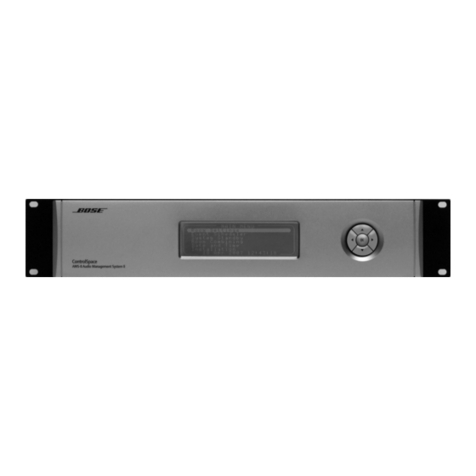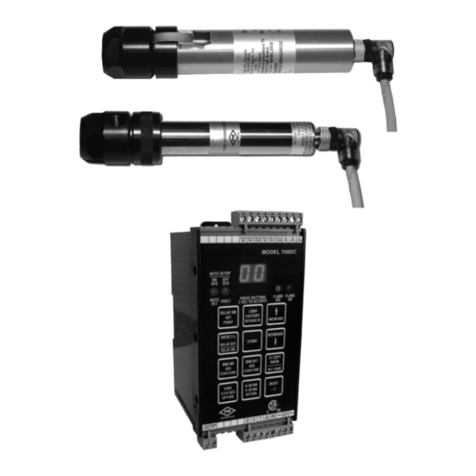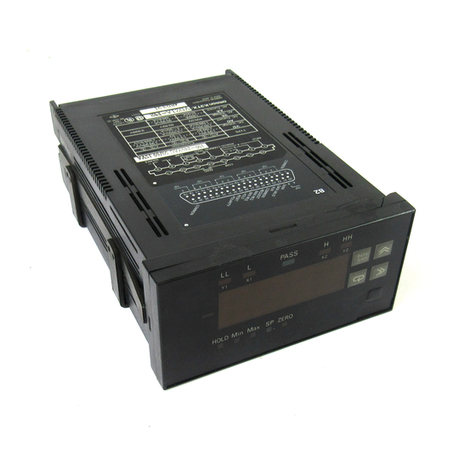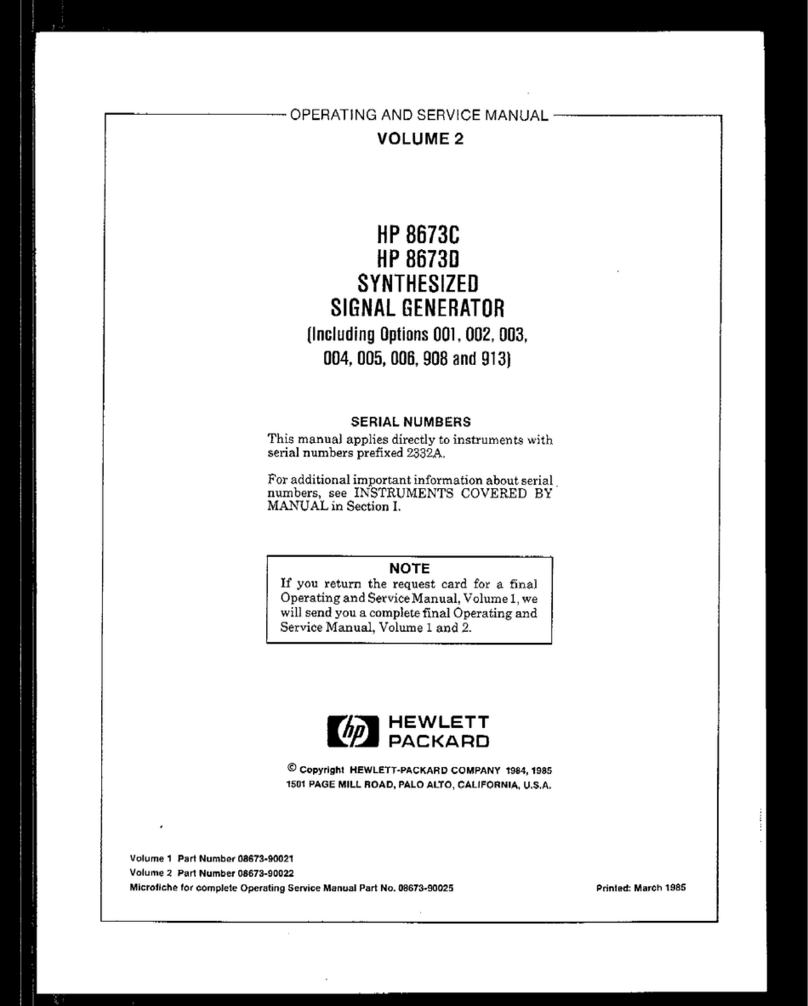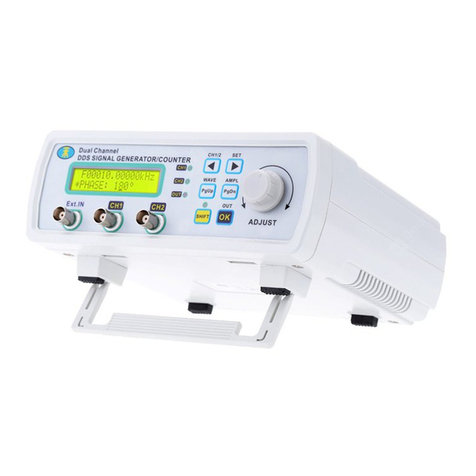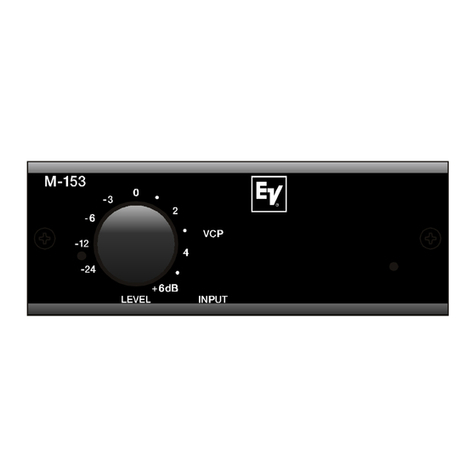Ingram Engineering MPA575 User manual

INGRAM ENGINEERING
MPA575
Microphone Signal Processor
Pre-amplifier, Equalizer, Compressor
Owner’s Manual
July 2014

MPA575 Owner’s Manual
7/2014
2

MPA575 Owner’s Manual
7/2014
3
Table of Contents
INTRODUCTION……………………………………………………………………………………….. 5
FRONT PANEL FEATURES……………………………………………………………………….. …6
QUICK START GUIDE……………………………………………………………………….. ………..7
BLOCK DIAGRAM……………………………………………………………………….. …………….8
EDGE CONNECTOR PIN ASSIGNMENTS……………………………………….. ………………..9
SAFETY INSTRUCTIONS………………………………………………………………………..…..10
INSTRUCTIONS FOR USE………………………………………………………………………..…12
1. Installing the MPA575 in a Rack………………………………………………………………………..…………..12
2. Module Warm Up………………………………………………………………………..…………………………...12
3. Microphone Impedance Selector………………………………………………………………………..………….12
4. Adjusting the Audio Input Level………………………………………………………………………..…………...13
5. Overload LEDs……………………………………………………………………….....……………………………14
6. +48V Switch………………………………………………………………………..…………………………………14
7. Phase Invert………………………………………………………………………..…………………………………14
8. Equalizer………………………………………………………………………..……………………………………..14
9. High Pass (Low Cut) Filter………………………………………………………………………..…………………15
10. Compressor………………………………………………………………………..……………………………….15
11. Using the Compressor Side Chain Filter………………………………………………………………………..16
12. Adjusting the Output Level………………………………………………………………………..………………18
13. Using the MPA575 Line Mode………………………………………………………………………..………….18
14. Mix Bus Settings………………………………………………………………………..………………………….20
AUDIO SPECIFICATIONS………………………………………………………………………..….23
ENVIRONMENTAL SPECIFICATIONS……………………………………………………………..24
CARE AND MAINTENANCE………………………………………………………………………....25
TROUBLESHOOTING……………………………………………………………………….. ……....25
1. Power does not turn on………………………………………………………………………..…………………….25
2. Microphone Input Audio Sounds Distorted……………………………………………………………………….. 25
3. Compressor Internal Side Chain Equalizer Does Not Function…………………………………………………26
4. Hum or Buzz is Audible……………………………………………………………………………………………...26
CONTACT INFORMATION………………………………………………………………………….. 26
WARRANTY INFORMATION………………………………………………………………………...27
MPA575 MICROPHONE SIGNAL PROCESSOR RECALL SHEET……………………………. 30

MPA575 Owner’s Manual
7/2014
4
Table of Figures
Figure 1: Front Panel Features………………………………………………………………………. 6
Figure 2: Block Diagram………………………………………………………………………………. 8
Figure 3: Edge Connector Pin Assignments………………………………………………………... 9
Figure 4: Attenuation or Gain vs. Stepped Switch Position………………………………………13
Figure 5: MPA575 with Internal Side Chain Filter………………………………………………....17
Figure 6: MPA575 with External Side Chain Filter………………………………………………...17
Figure 7: Line Mode Slide Switch Location………………………………………………………...19
Figure 8: Line Mode Slide Switch Close-Up………………………………………………………. 20
Figure 9: Slide Switch Showing Mix Buss Switch Assignment………………………………..... 21
Figure 10: Standard Mix Bus Configuration……………………………………………………….. 22
Figure 11: Radial Inverting Summing Node Mix Bus Configuration……………………………..22

MPA575 Owner’s Manual
7/2014
5
INTRODUCTION
Welcome, and congratulations on your interest in the MPA575 Microphone Signal Processor!
It has been crafted to provide the extremely high quality audio and a simple user interface that
requires minimal effort to optimize.
The manual is arranged to first introduce the features and provide a means to properly capture
audio within minutes via a Quick Start Guide. Subsequent manual sections provide additional
explanations, technical information and specifications.
The MPA575 features a lightly colored transformer coupled discrete microphone pre-amplifier,
program dependent soft knee compressor with auto make-up gain, a unique see-saw EQ with
combined low and high frequency control that allows broad frequency response adjustments
with a single control knob, and a High Pass (Low Cut) filter with variable cutoff frequency. A
high current buffer provides electronic balancing, isolation and capability to drive capacitive
loads. Together, they form a mini channel strip that performs all essential analog signal
processing functions needed before committing audio to a recording medium.
The MPA575 is engineered to take care of all complicated switching functions and gain
adjustments behind the scenes so that the recording Engineer can concentrate on the music.
As the mic load impedance setting is changed or the EQ and compressor are switched in and
out, the gain stages are automatically adjusted so that the MPA575 gain is constant, within just
a few tenths of a dB. Therefore, A-B audio quality comparisons when changing settings is
extremely easy and more informative.
Long, trouble-free lifetime is ensured by the use of highest quality, long life caps and pots.
Audiophile grade components are used throughout.

MPA575 Owner’s Manual
7/2014
6
FRONT PANEL FEATURES
Figure 1: Front Panel Features
Impedance Presented to
Mic
Overload LED
Lights at 1% THD
Signal LED
Lights at -30 VU Input
High Pass Filter
Variable from 30 Hz to
400 Hz
High Pass Filter In / Out
Switch
Internal Compressor
Side Chain EQ. Rotate
CCW to Trigger Comp
on LF; Rotate CW to
Trigger Comp on HF
External Compressor
Side Chain EQ loopthru
Button In = External EQ
VU Meter
Phase Invert
Gain in dB
EQ In / Out Switch
Main Audio Path EQ
Rotate CCW for LF
Emphasis; Rotate CW
for HF Emphasis
Compressor In / Out
Switch
Comp Threshold in dBu
Place the Compressor
Pre-EQ (In) or Post-EQ
(
Out
)
Output Level
Phantom Power Toggle
Switch
Comp Activity LEDs
Yellow = 1 dB Gain
Reduction

MPA575 Owner’s Manual
7/2014
7
QUICK START GUIDE
Optimizing the MPA575 settings involves five easy steps:
1. Disengage the EQ and HPF.
2. Increase the Gain stepped switch until the red O/L LED lights infrequently, then reduce
the stepped switch by one step.
3. If the compressor is used, first adjust the Side Chain (SC) EQ to position 0 for flat
frequency response.
4. Adjust the compressor Threshold for infrequent lighting of the yellow activity LED.
5. Adjust the Output Level pot until the signal level being provided to subsequent
equipment is appropriate.
Once these basic steps have been taken, the timbre may be tweaked by experimenting with
the Mic Load setting, the main EQ, High Pass Filter, the Compressor threshold, and the
compressor Side Chain (SC) EQ.
It is worth noting that extra effort has been made for the MPA575 design to automatically hold
the total gain constant to within +/- 0.2 dB as the Mic Load switch is changed and as the EQ is
switched in and out. This allows easy A/B auditions of different mic loads and EQ settings
under controlled conditions, rather than having loudness differences obscure true differences
in timbre.
The Compressor side chain EQ can have a surprising effect on the compressed audio timbre.
The side chain EQ uses the same design as the Main EQ, but the side chain EQ is used only
to trigger the Compressor gain reduction, not equalize the Main audio path. As such, when the
side chain EQ is set to emphasize certain frequencies, those frequencies are compressed
more than the others. For example, a sibilant voice or instrument with excessive high
frequency content can be selectively compressed by turning the side chain EQ clockwise past
the center position. High frequencies are compressed, and low frequencies are allowed to
pass with little compression. The amount of compression can be set by adjusting the
Threshold level.
Another useful feature to experiment with is the Compressor Pre- Post-EQ button. This button
allows you to choose whether to place the Main EQ before the Compressor or after the
Compressor. This way, the Main EQ can be used as a tool to only equalize the music
(Compressor Pre-EQ), or can be used as a tool to affect to which frequencies compression is
applied as well as to equalize the Main audio path (Compressor Post-EQ).

MPA575 Owner’s Manual
7/2014
8
BLOCK DIAGRAM
A block diagram of the MPA575 is shown below.
Figure 2: Block Diagram

MPA575 Owner’s Manual
7/2014
9
EDGE CONNECTOR PIN ASSIGNMENTS
Power, ground and audio signal interface to the MPA575 is through the edge card connector at
the rear of the module. Assignments of the edge card connector pins follow:
Pin 1 Chassis Ground
Pin 2 Output, Balanced, Positive
Pin 3 No Connection, reserved for OPT-B
Pin 4 Output, Balanced, Negative
Pin 5 Audio Ground
Pin 6 Reserved for Compressor Link Connection
Pin 7 Ext Comp Side Chain Filter Send, OPT-A (1/4” Ring)
Pin 8 Input, Balanced, Negative
Pin 9 Ext Comp Side Chain Filter Receive, OPT-A (1/4” Tip)
Pin 10 Input, Balanced, Positive
Pin 11 Mix Buss Send from Output, Positive
Pin 12 +16V DC
Pin 13 Power Ground
Pin 14 -16V DC
Pin 15 +48V DC
Figure 3: Edge Connector Pin Assignments
OPT-A lines in Pins 7 and 9 are used to route the Compressor side chain signal to an external
filter. This path is connected only when the front panel “EXT SC” button is pushed in.
When enabled, the Mix Buss send is connected to the Output, Balanced, Positive path. To
enable the Mix Buss send, a miniature slide switch on the module PCB must be properly set.
The module cover must be removed to access the slide switch. The slide switch is located
next to the PCB edge connector. Switch #1 controls the Mix Buss connection. Additional
information about this feature is in the INSTRUCTIONS FOR USE section.

MPA575 Owner’s Manual
7/2014
10
SAFETY INSTRUCTIONS
1. Read Instructions
All the safety and operation instructions should be read before this product is operated.
2. Retain Instructions
The safety and operating instructions should be kept for future reference.
3. Heed Warnings
All warnings on the product and in these operating instructions should be followed.
4. Follow Instructions
All operating and other instructions should be followed.
5. Water and Moisture
This product should not be used near water or in environments with very high humidity
or with condensation.
6. Heat
This product should be situated away from heat sources such as radiators or other
devices that product heat.
7. Power Sources
This product should be connected to a power supply only of the type described in these
operation instructions or as marked on this product.
8. Object and Liquid Entry
Care should be taken so that objects do not fall into and liquids are not spilled into the
inside of this product.
9. Damage Requiring Service
This product should be serviced only by qualified service personnel when:
a. Objects have fallen, or liquid has spilled into the product; or
b. The product has been exposed to rain; or
c. The product does not appear to operate normally or exhibits a marked change in
performance; or
d. The product has been dropped, or its chassis damaged.

MPA575 Owner’s Manual
7/2014
11
10.Servicing
The user should not attempt to service this product beyond those means described in
this operating manual. All other servicing should be referred to the Ingram Engineering
Service Department.
11.Compatible Microphone Cables
To prevent hazard or damage, ensure that only microphone cables and microphones
designed to IEC 268-15A are connected. Specifically, phantom power positive voltage
should be supplied through a 6.81k Ohm resistor to XLR pin 2 and through a second
6.81k Ohm resistor to XLR pin 3. Phantom power negative should be connected to XLR
pin 1.
Warning – To reduce the risk of fire or electric shock, do not expose this appliance to
rain or moisture.

MPA575 Owner’s Manual
7/2014
12
INSTRUCTIONS FOR USE
1. Installing the MPA575 in a Rack
RACK POWER MUST BE OFF BEFORE INSTALLING THE MPA575. The module
design is not warrantied for damage that occurs when it is inserted or removed from a
rack with power applied.
2. Module Warm Up
After power up, please allow approximately 2 minutes time for component warm up and
stabilization time before beginning critical listening or recording.
3. Microphone Impedance Selector
The balanced microphone input uses an input transformer for smooth tonal character,
high CMRR, RF interference rejection, optimum noise performance and best impedance
termination over a wide range of microphone types. The transformer turns ratio can be
switched to realize different impedances presented to the microphone. The microphone
load can be chosen as 600 Ohms or 2.4k Ohms. Timbre can be affected by the load
presented to the microphone, so the microphone impedance selector may be used as a
tool to color the audio so that it matches the recording situation. The 600 Ohm
impedance setting shows darker timbre, while the 2.4k Ohm settings increase the
brightness and neutrality. Some microphone manufacturers have explicit requirements
for the load presented to the microphone, so the MPA685 impedance selector can also
be used to guarantee that the microphone manufacturer’s requirements are met.
The MPA575 is designed to provide the input transformer, and therefore the mic, with
constant impedance load, independent of any pre-amp settings, therefore guaranteeing
consistent and excellent transient, frequency and phase response, load impedance and
noise matching. When switching between the impedance settings, the MPA575
automatically adjusts the gain so the two impedance settings are level matched. The
MPA575 input impedances have been carefully optimized to maintain pure, transient
response and therefore the best quality for any microphone output impedance.
Outstanding results are realized using any microphone, from the low output impedance
Neumann KM184 to the high output impedance Audio-Technica AE2500 (dynamic
capsule), with ribbon mics like the Royer 121 and with condensers like the AKG C414.

MPA575 Owner’s Manual
7/2014
13
4. Adjusting the Audio Input Level
After audio connections are made and the audio source is supplying signal, adjust the
“Input” knob until the Overload LED (“O/L” on the front panel) lights infrequently, then,
decrease the Input knob by one step. This maximizes the dynamic range of the audio
and also realizes good MPA575 audio quality. Minimum of 5dB headroom is realized by
following this procedure. For maximum linearity, the Overload LED should never light.
However, because the pre-amp distortion curve versus input level increases gradually,
infrequently lighting the Overload LED with audio peaks still realizes good quality. As
always, your ears are the best guide for how high the input signal can be set. The
Overload LED lights when THD reaches 1%.
The Input section stepped switch functions as a combined attenuator / gain control.
When the switch is adjusted between “10” and “34” on the front panel, the switch is in
attenuator mode, and the gain of the amplifier stages is constant. When the switch is
adjusted between “34” and “70” on the front panel, the switch is in gain mode, the
attenuator is removed from the circuit and the pre-amp gain is varied. The following
graph shows the changes in total pre-amp gain versus each stepped switch setting.
Sixty dB adjustment range is provided, and dynamic range can be maximized with one
simple procedure for any signal level.
5
10
15
20
25
30
35
40
45
50
55
60
65
70
75
012345678910111213
MPA575 Gain (dB)
Stepped Switch Position
MPA575 Attenuation / Gain vs. Stepped Switch Position
Gain (dB)
Gain Mode
Attenuation Mode
60 dB Total
Adjustment
Range
24 dB
Attenuation
Range
Figure 4: Attenuation or Gain vs. Stepped Switch Position

MPA575 Owner’s Manual
7/2014
14
5. Overload LEDs
The Overload LEDs (O/L) are triggered by fast responding peak detector circuits. The
LEDs first begin to illuminate at ~1% THD and remain on for levels above the trigger
point. The Overload detection circuitry accurately tracks the 1% THD threshold to
frequencies higher than 20 kHz.
If the input stepped switch is adjusted one step below the setting that occasionally lights
the Overload LED, a minimum 5dB of headroom before ~1% distortion is realized, and
dynamic range is maximized. If higher headroom is desired, the input stepped switch
may be adjusted lower.
The Overload LED on the Main audio path provides accurate indication no matter
whether the EQ or Compressor is On or Off.
Overload LEDs are also included for the Main EQ and side chain EQ paths since both
of those filters boost as well as cut the audio levels. If the EQ or side chain Overload
LEDs light, then rotate the filter adjustment knob towards center position to reduce
peaking, or reduce the stepped switch until the Overload LEDs do not light.
6. +48V Switch
+48V phantom power can be applied to microphones by flipping the toggle switch to the
right. The +48V LED lights when the phantom power is On. When on, +48V phantom
power is applied to both positive and negative balanced microphone input connections.
7. Phase Invert
With the Phase Invert switch pushed in, the audio signal is inverted at the pre-amplifier
output.
8. Equalizer
The Equalizer (EQ) is a combined low / high frequency EQ that acts much like a
frequency response see-saw, with the pivot point set at 1.2 kHz. Broad and musical
adjustments of the audio spectrum can be made using the EQ. As the adjustment knob
is rotated counter clockwise, low frequencies are emphasized and high frequencies are
attenuated. As the knob is rotated clockwise, low frequencies are attenuated and high

MPA575 Owner’s Manual
7/2014
15
frequencies are emphasized. The EQ is hardwire bypassed when the EQ is switched
off using the front panel push button.
9. High Pass (Low Cut) Filter
A push button on the front panel engages or disengages the High Pass Filter (HPF).
The HPF attenuates low frequencies when engaged. The filter applies a 6dB / octave
cut to frequencies below the indicated frequency when activated. The cutoff frequency
can be varied from 30 Hz to 400 Hz.
10.Compressor
The compressor is a program dependent feed forward design with a simple user
interface for controlling dynamics. The front panel Threshold (THR) knob not only
controls the compressor threshold, but also controls compression ratio and make-up
gain. Attack and release times are program dependent and automatically configured.
The compressor has a soft-knee characteristic and compression ratios of 1.2:1 to
greater than 20:1, depending on how far above compressor threshold the audio is
driven. When working the compressor threshold in combination with the pre-amp gain
adjustments, a very wide range of dynamic control can be implemented, from subtle and
light compression to nearly limited response. Makeup gain is automatically changed as
the compressor threshold is changed so that a relatively constant average program
level is realized. An internal MPA575 low / high frequency EQ is dedicated to the
compressor path and is used as a side chain filter. For more extreme side chain
possibilities, the side chain path is also routed to the 500-series API1"Option" or Radial
Engineering "Omniport"1output so that an external filter may be used instead of the
internal EQ. The entire compressor path and side chain can be bypassed when not in
use.
The compressor front panel LEDs indicate when the signal level is below or above
compression threshold. The Green LED indicates signals below threshold and the
Yellow LED indicates when the signal is above threshold. The Yellow LED first lights
when 1dB compression is achieved and remains lit as long as the signal is above
threshold.
The front panel compressor silkscreen level is expressed as dBu, and is referenced to
the output level that would result if the compressor was off and the output pot was set
1API is a trademark of Automated Processes, and Omniport is a trademark of Radial
Engineering and their appearance here in no way alters their ownership of same.

MPA575 Owner’s Manual
7/2014
16
for maximum level. When the compressor is on, the output level changes because the
compressor has automatic make-up gain. Because of this, and because the output pot
may be set to any arbitrary position, it is impossible to predict what the true output level
would be, so the reference described above is used since threshold level can be known
under these conditions.
For example, the threshold can be set to +3dBu, and 1dB compression is realized at an
uncompressed output level of +3dB, assuming the output pot is at maximum.
Compression increases as audio levels increase above the +3dBu threshold used in this
example. The automatic make-up gain feature increases the MPA575 gain so that the
subjective loudness of the compressed signal is approximately equal to the non-
compressed loudness, and easy A/B comparisons of the audio quality can made.
11.Using the Compressor Side Chain Filter
An internal MPA575 low / high frequency EQ is dedicated to the compressor path and is
used as a side chain filter. For more extreme side chain possibilities than are offered
with the see-saw type filter internal to the MPA575, an external side chain filter can be
used. For example, filters with high-Q boost or notch capability can be used to target
narrow frequency ranges that need compression more than the overall spectrum.
The “EXT SC” front panel button is used to select internal or external side chain filter.
When the button is Out, the internal filter is used, and when In, the signal is routed to an
external filter.
The external side chain path is routed to the 500-series API "OPT-A" or Radial
Engineering "Omniport" output, module edge connector Pins 7 and 9, and these can be
used with rack units that have the API “Option” or Radial Engineering “Omniport” 1/4”
rear panel input/output.
The rack unit OPT-A / Omniport 1/4” jack Ring is connected to edge connector Pin 7,
and serves as the output from the MPA575 module.
The 1/4” jack Tip is connected to edge connector Pin 9, and serves as the input from an
external filter to route the signal back into the MPA575.
The following block diagrams show signal routing for internal and external side chain
filter use. For simplicity, the diagrams show the signal flowing through the compressor
first, then to the main EQ, but the main EQ can actually be placed before or after the
compressor by using the “PRE EQ” front panel push button.

MPA575 Owner’s Manual
7/2014
17
Figure 5: MPA575 with Internal Side Chain Filter
Figure 6: MPA575 with External Side Chain Filter

MPA575 Owner’s Manual
7/2014
18
12.Adjusting the Output Level
Use the “Output” knob to adjust the audio level so that it is compatible with the level
specifications of the tape machine, processing gear or A/D connected to the pre-amp
output.
The Output level pot can be used in conjunction with the stepped Input switch to set the
overall MPA575 gain to any value. For applications where 0 dB gain is desired, many
settings can achieve this, but two simple methods are listed below for convenience:
Method 1: Set the stepped switch to ‘34’; set the Output pot to ‘1’
Method 2: Set the stepped switch to ‘10’; set the Output pot to ‘6.2’ (approximate)
A high current buffer provides electronic balancing, isolation and capability to drive
capacitive loads. The output buffer of the pre-amp can handle any signal level the input
sections can produce, so the increasing the Output knob to its maximum level does not
degrade the audio quality. This is true for any Input section settings.
13.Using the MPA575 Line Mode
Some applications require an impedance higher than the 600 or 2.4k Ohms presented
by the MPA575 in standard operating mode. Prime examples of this are using the
MPA575 as a line-level device for post processing or re-amplifying recorded signals.
Most modern equipment can drive loads as low as 2.4k Ohms, but for those cases
where higher MPA575 input impedance is desired, the MPA575 can be configured to
present either a 2.9k or 11k Ohm load instead of 600 or 2.4k Ohm load. The same front
panel switch that changes the load between 600 and 2.4k Ohms is used to switch
between 2.9k and 11k Ohm load when the MPA575 is in Line mode.
Line mode is activated by using a slide switch accessible after the module cover is
removed. After the cover is removed, a small set of slide switches near the edge
connector is visible. Locate switch #4 and slide it to the Off position to activate Line
mode. Replace the module cover. The MPA575 is shipped with Mic mode active.
When the MPA575 is in Line mode, the input attenuator is disabled. The attenuator is
controlled by the stepped switch, and is active when the switch is in the positions
labeled 10, 16, 22 and 28. Because the attenuator is inactive in Line mode, the
MPA575 gain is at its minimum and is constant for stepped switch positions 10, 16, 22,
28 and 34.
Overall gain is reduced in Line mode, so constant gain of 21dB is realized for stepped
switch positions 10, 16, 22, 28 and 34. Gain is increased as the stepped switch is

MPA575 Owner’s Manual
7/2014
19
increased above 34. Max MPA575 gain in Line Mode is 57dB, and is realized with the
stepped switch at fully clockwise position.
The following photographs show the location of the slide switch relative to the edge
connector and show a Line mode switch close-up.
Figure 7: Line Mode Slide Switch Location
Slide Switch Location

MPA575 Owner’s Manual
7/2014
20
Figure 8: Line Mode Slide Switch Close-Up
14.Mix Bus Settings
Pin 11 of the edge card connector is specified in the VPR1Alliance 500 Specification for
use as a Gain Trim Resistor. However, current usage by racks being sold in the
marketplace is for a mix bus for summing 500-series module outputs. The MPA575 takes
advantage of this usage.
The MPA575 has a slide switch that is used for enabling or disabling the Mix Buss option.
When disabled, the MPA575 output is disconnected from the Mix Bus on Pin 11. For most
applications, it is acceptable to always leave the Mix Buss enabled and therefore
connected to Pin 11. The MPA575 is shipped with the Mix Bus enabled.
To access the slide switch used for enabling/disabling the Mix Bus, remove the cover and
locate the small slide switch next to the edge card connector. The following photograph
shows a close-up of the slide switch.
1VPR is a trademark of Automated Processes Incorporated, and it’s appearance here in no
way alters their ownership of same.
On
Off
Other manuals for MPA575
1
Table of contents
